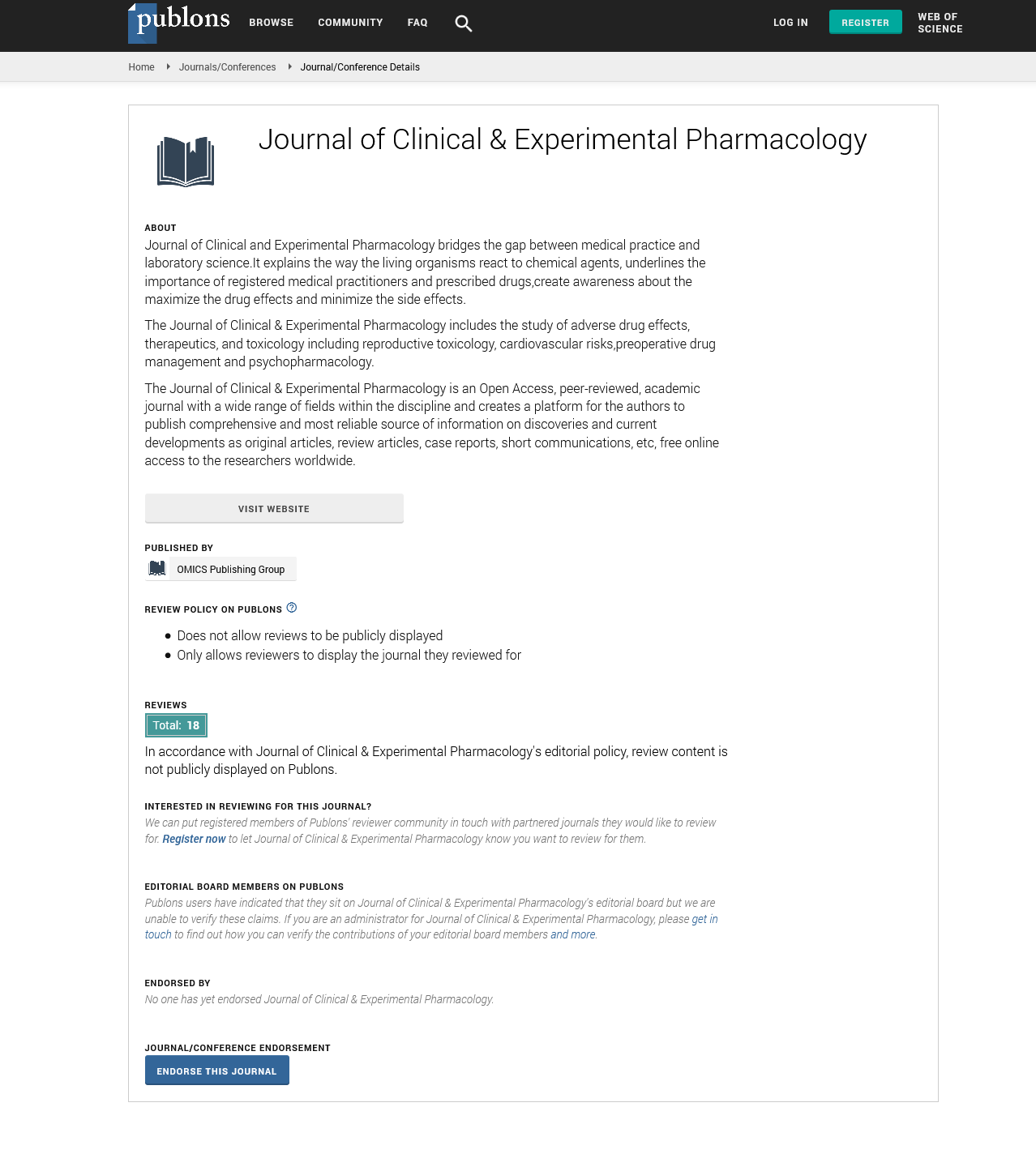Indexed In
- Open J Gate
- Genamics JournalSeek
- China National Knowledge Infrastructure (CNKI)
- Ulrich's Periodicals Directory
- RefSeek
- Hamdard University
- EBSCO A-Z
- OCLC- WorldCat
- Publons
- Google Scholar
Useful Links
Share This Page
Journal Flyer

Open Access Journals
- Agri and Aquaculture
- Biochemistry
- Bioinformatics & Systems Biology
- Business & Management
- Chemistry
- Clinical Sciences
- Engineering
- Food & Nutrition
- General Science
- Genetics & Molecular Biology
- Immunology & Microbiology
- Medical Sciences
- Neuroscience & Psychology
- Nursing & Health Care
- Pharmaceutical Sciences
Patterns of self-medication with over-the-counter pain relievers (acetaminophen, ibuprofen, and aspirin) among the Kuwaiti population
World Congress on Pharmacology
July 20-22, 2015 Brisbane, Australia
N Badawy, A Alhajraf and M Alsamdan
Posters-Accepted Abstracts: Clin Exp Pharmacol
Abstract:
Background: Global studies showed that the public lacks knowledge about over-the-counter pain relievers, with an alarming degree of unawareness and lack of concern about their potential side effects. Published data about the use of such medication in Kuwait are limited. Material and methods: A descriptive cross-sectional questionnaire-based survey. The data were collected over a four-month period in 2012, from 850 subjects who identified as Kuwaiti citizens. These subjects were recruited using stratified random sampling, and they were selected from the six Kuwaiti governorates.. Results: Overall, a 67% response rate was obtained. In total, 68% (573) of the respondents reported use of over-the-counter pain relievers. Women, middle-aged or single individuals, and those who had completed higher education used these drugs more than any other subgroup (p<0.05). We found evidence of inappropriate use of these drugs, with 15% (88) of the consumers using them almost daily. Further, 19% (111) of the consumers exceeded the recommended dosage at least once. Not only were 81% of the consumers unaware of the potential side effects, but also more than 61% were not concerned about them. Women were more knowledgeable than men regarding the maximum dose (p=0.036, OR 1.49, CI 1.03?2.17). Consumers with higher levels of education did not show distinct knowledge regarding the maximum allowed dose of the drugs (p=0.252, OR 1.71, CI 0.68-4.25). Conclusion: The results showed a high prevalence of self-medication with over-the-counter pain relievers among Kuwaiti citizens. The subjects showed marked unawareness and a lack of concern regarding the potential complications resulting from the inappropriate use of these analgesics. This demonstrates the need for educational interventions directed toward both patients and health care workers.

